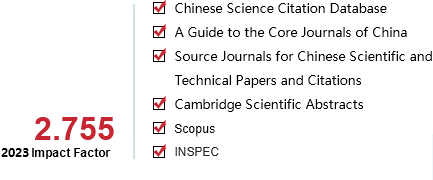[1]ZHANG Xinpei,ZHOU Yao,ZHANG Yi.Knowledge distillation method for fetal ultrasound section identification[J].CAAI Transactions on Intelligent Systems,2022,17(1):181-191.[doi:10.11992/tis.202105007]
Copy
Knowledge distillation method for fetal ultrasound section identification
CAAI Transactions on Intelligent Systems[ISSN 1673-4785/CN 23-1538/TP] Volume:
17
Number of periods:
2022 1
Page number:
181-191
Column:
人工智能院长论坛
Public date:
2022-01-05
- Title:
- Knowledge distillation method for fetal ultrasound section identification
- Keywords:
- deep learning; convolutional neural network; residual network; prenatal diagnosis; fetal ultrasound; computer aided diagnosis; knowledge distillation; model compression
- CLC:
- TP30
- DOI:
- 10.11992/tis.202105007
- Abstract:
- Fetal ultrasound section recognition is one of the main tasks of prenatal ultrasonography, which directly affects the quality of prenatal ultrasonography. In recent years, by the Deep Neural Network method, we have made great advances in clinical ultrasound-assisted diagnosis. However, most of the existing studies have applied fine-tuned pre-trained model for migration learning, which not only easily leads to parameter redundancy and overfitting problems, but also limits the real-time analysis capability in practical applications. Therefore, this paper proposes a knowledge distillation method for fetal ultrasound section recognition. In the first stage, a residual network is used in the student and teacher network model to incorporate attention mechanisms for both hidden layer features, extract key information in the hidden layer, and perform one knowledge migration so that the student network can obtain a priori weight. In the second stage, the teacher network model is used to guide the student network model to perform knowledge distillation training, so as to further improve the performance of knowledge migration in an overall manner. The experimental results show that the student network reduces the model complexity while improving various performances, which is beneficial to the deployment of ultrasound device terminals and real-time analysis capability.
- References:
-
[1] MARACI M A, NAPOLITANO R, PAPAGEORGHIOU A, et al. Searching for structures of interest in an ultrasound video sequence[C]//Proceedings of the 5th International Workshop on Machine Learning in Medical Imaging. Boston, USA, 2014: 133–140.
[2] PLATT J. Sequential minimal optimization: a fast algorithm for training support vector machines[J]. Advances in kernel methods-support vector learning, 1998, 7:1–22.
[3] BAUMGARTNER C F, KAMNITSAS K, MATTHEW J, et al. SonoNet: real-time detection and localisation of fetal standard scan planes in freehand ultrasound[J]. IEEE transactions on medical imaging, 2017, 36(11): 2204–2215.
[4] MARACI M A, BRIDGE C P, NAPOLITANO R, et al. A framework for analysis of linear ultrasound videos to detect fetal presentation and heartbeat[J]. Medical image analysis, 2017, 37: 22–36.
[5] LAFFERTY J D, MCCALLUM A, PEREIRA F C N. Conditional random fields: probabilistic models for segmenting and labeling sequence data[C]//Proceedings of the 18th International Conference on Machine Learning. San Francisco, USA, 2001: 282–289.
[6] RYOU H, YAQUB M, CAVALLARO A, et al. Automated 3D ultrasound biometry planes extraction for first trimester fetal assessment[C]//Proceedings of the 7th International Workshop on Machine Learning in Medical Imaging. Athens, Greece, 2016: 196–204.
[7] CHENG P M, MALHI M S. Transfer learning with convolutional neural networks for classification of abdominal ultrasound images[J]. Journal of digital imaging, 2017, 30(2): 234–243.
[8] DONAHUE J. CaffeNet(GitHubPage)[EB/OL]. (2016-05-6)[2021-05-11].https://github.com/BVLC/caffe/tree/master/models/bvlc_reference_caffenet
[9] SIMONYAN K. VGG team ILSVRC-2014 model with 16 weight layers (GitHub Page)[EB/OL]. (2016-05-16)[2021-05-11]. https://gist.github.com/ksimonyan/211839e770f7b538e2d8
[10] HOWARD A G, ZHU Menglong, CHEN Bo, et al. MobileNets: efficient convolutional neural networks for mobile vision applications[EB/OL]. (2017-04-17)[2021-05-11]. https://arxiv.org/abs/1704.04861v1.
[11] SANDLER M, HOWARD A, ZHU Menglong, et al. MobileNetV2: inverted residuals and linear bottlenecks[C]//Proceedings of 2018 IEEE/CVF Conference on Computer Vision and Pattern Recognition. Salt Lake City, USA, 2018: 4510–4520.
[12] ANDREW A, SANDLER M, GRACE C, et al. Searching for mobileNetV3[EB/OL]. (2019-05-06)[2021-05-11].https://arxiv.org/abs/1905.02244v3.
[13] BUCILUǎ C, CARUANA R, NICULESCU-MIZIL A. Model compression[C]//Proceedings of the 12th ACM SIGKDD International Conference on Knowledge Discovery and Data Mining. Philadelphia, USA, 2006: 535–541.
[14] ROMERO A, BALLAS N, KAHOU S E, et al. FitNets: hints for thin deep nets[J]. (2014-12-19)[2021-05-11]. https://arxiv.org/abs/1412.6550v2.
[15] HINTON G, VINYALS O, DEAN J. Distilling the knowledge in a neural network[EB/OL]. (2015-03-09)[2021-05-11].https://arxiv.org/abs/1503.02531.
[16] JIN Xiao, PENG Baoyun, WU Yichao, et al. Knowledge distillation via route constrained optimization[C]//Proceedings of 2019 IEEE/CVF International Conference on Computer Vision . Seoul, Korea , 2019: 1345–1354.
[17] PHUONG M H, LAMPERT C H. Towards understanding knowledge distillation[C]//Proceedings of the 36th International Conference on Machine Learning. Long Beach, USA, 2019.
[18] JI Guangda, ZHU Zhanxing. Knowledge distillation in wide neural networks: risk bound, data efficiency and imperfect teacher[EB/OL]. (2020-10-20)[2021-05-11].https://arxiv.org/abs/2010.10090.
[19] ZHANG Ying, XIANG Tao, HOSPEDALES T M, et al. Deep mutual learning[C]//Proceedings of 2018 IEEE/CVF Conference on Computer Vision and Pattern Recognition. Salt Lake City, USA, 2018: 4320–4328.
[20] MOBAHI H, FARAJTABAR M, BARTLETT P L. Self-distillation amplifies regularization in Hilbert space[EB/OL]. (2020-02-13)[2021-05-11].https://arxiv.org/abs/2002.05715v1.
[21] ZHAI Mengyao, CHEN Lei, TUNG F, et al. Lifelong GAN: continual learning for conditional image generation[C]//Proceedings of 2019 IEEE/CVF International Conference on Computer Vision . Seoul, South Korea, 2019: 2759–2768.
[22] YUAN Li, TAY F E H , LI Guilin, et al. Revisit knowledge distillation: a teacher-free framework[C]//Proceedings of the International Conference on Learning Representation. Addis Ababa, Ethiopia, 2020.
- Similar References:
Memo
-
Last Update:
1900-01-01
